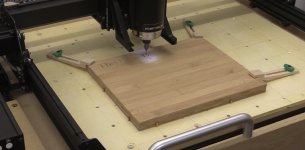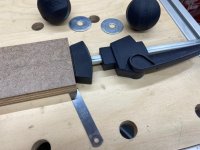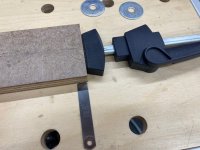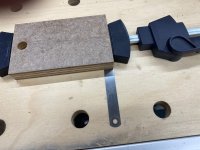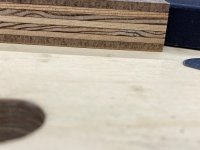jeffinsgf said:
Cheese,
As I understand your test, you were tightening the clamping elements, then putting the knobs underneath and pulling the clamped material down. This makes sense.
Did you try securing the clamping elements with the knobs and fender washers first, then clamping the material?
Just wondering if the result is coming from pulling the clamped material down or from more secure mounting of the clamping element. For repetitive work, it would be nice if the answer was #2.
[member=7266]jeffinsgf[/member] I tried it both ways. The first go-around was securing the CE clamps to the table with the knobs & fender washers and then clamping the wood...that worked fine.
For the second go-around I just clamped the piece of wood to the table with the CE clamps and then added the knobs & the fender washers...that also worked well. I wanted to see if when the CE clamp was tightened if there was enough force from the knobs underneath to pull the wood flush with the table top.
The second method I'd think would lead to a more secure form of clamping because as you're puling the wood back to the surface of the table (about 1/32") the wood is also moving a small amount laterally and putting additional compression forces on the CE clamp.
If I had a force meter spring scale, I'd have added an eye bolt to the top of the piece of wood and taken some measurements for both methods of clamping.

